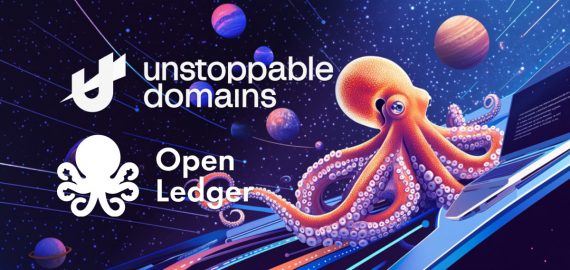Jakov Buratović Reveals Lido’s Protocol Upgrade Process. What’s coming next?


In Brief
Insights from the Master of DeFi at Hack Seasons Dubai, covering mechanics, rewards distribution, regulatory risk mitigation, DAO operations, and the latest updates enhancing decentralisation and security.
Within the vibrant atmosphere of the Hack Seasons Dubai, we had a chance to talk with Jakov Buratović, both Master of DeFi and Lido DAO Contributor, to delve into the nuances of Lido’s staking protocol. From liquid staking mechanics to governance strategies and future developments, Jakov gave us invaluable insights into the Lido features and his vision for the future of DeFi.
Could you walk us through the mechanics of how staking works within Lido Finance, particularly focusing on the concept of liquid staking?
You can deposit your assets using the liquid staking protocol, such as Lido. As soon as you deposit your ETH, you get another token, which is staked ETH, which is an ERC20 token. It can be sold and traded on the secondary market and is fully composable inside DeFi.
The underlying ETH that you have deposited inside is distributed to multiple different validators, which is an additional advantage because if you’re running your own validator, you’re on your own. If your validator goes down, you’re losing on rewards; you can get slashed.
In the Lido protocol, when you deposit your ETH, that ETH gets distributed to multiple validators, and it provides a much more robust system with stable reward returns.
How are staking rewards distributed to users who participate in the Lido staking pool?
For the staked ETH, there is a re-base event every day, and in the wallet, the user can actually see an updated balance, so it’s pretty much a real-time reward distribution, whereas with wrapped staked ETH, the same thing happens as well, but the balance will stay constant. The thing that will change is the actual value of the token.
So, staking rewards are distributed once a day with the re-base events to all staked ETH and wrapped staked ETH holders.
Besides staking, are there any additional ways for users to earn rewards on Lido?
Through the Lido protocol specifically, the only option is to stake and earn validator rewards. That is the only service that’s provided by the protocol. However, due to the nature of permissionless protocol design and composability, third-party protocols are offering a lot of opportunities. For example, you can use, as I previously mentioned, staked ETH to provide liquidity for traders, which can earn you some trading fees from volume.
You can also use staked ETH as collateral in lending markets. If there is a natural incentive of the lending market to supply capital, then you can access additional rewards for supplying that capital. You can also think of your strategies or utilise something that some other protocols have already designed. There are countless opportunities inside DeFi where you can use staked ETH depending on your risk tolerance or your desire to explore.
What steps does Lido take to mitigate regulatory risks for its users and stakeholders?
There are multiple angles from which risk can be identified. However, the general idea is to provide the minimal infrastructure required to be a staking provider, which means that the entire code base and the entire protocol should be as simple as possible. That being said, when it comes to protocol security, Lido protocol is leading in the space with nine independent audits by top-tier companies for the Lido V2, which is currently active and a pretty sizable bug bounty program that is very important to keeping the protocol secure.
Through the bug bounty program, security experts can identify parts of the code that could be vulnerable when the code is live; there is a pretty good incentive for whitehats to try to find additional potential holes in the system.
What about the process of onboarding new nodes and validators?
Initially, the protocol began with a set of 5 professional node operators. Since then, Lido DAO has undergone five waves of onboarding via governance votes, bringing the current set to 37 node operators with top-of-the-class performance in the space. Lido DAO voted for the inclusion of a simple DVT module, enabling a more robust system by onboarding infrastructure projects like SSV and Obol.
On the validator level, there is no single point of failure; rather, the role of the validator is distributed to multiple operators. For example, you don’t need to have one validator that has about 100% uptime. You can have three out of four operators that are backing one validator, which improves the robustness of the system and allows the protocol to scale to a much higher number of node operators than before, which improves centralisation and security.
Could you elaborate on how the DAO operates? How are decisions made regarding protocol upgrades, fee structures, and strategic partnerships?
Usually, the discussion starts somewhere in the community. The best place is the Lido research forums, where all of the proposals are initiated.
After the forum discussion, when a kind of community sentiment is settled, depending on the requirement for the proposal fulfilment, the proposal can go to the snapshot vote, which is an off-chain voting platform. It’s usually done for certain temperature checks and formalisations. But if there is something more significant, like migrating funds from treasury or maybe protocol upgrade, that is something that requires a full-fledged on-chain vote using Aragon. So, depending on the type of the proposal, it goes either to an off-chain or on-chain vote.
And there are, again, some subcommittees inside the DAO that have voted in rights and permissions to operate independently because operating as a DAO has a lot of benefits but also a lot of friction. And I think one of the highly visible frictions that is present in all of the DAOs is just voters’ activity.
Lido V2 introduces significant updates to the protocol, including a Staking Router and support for various Node Operators. How does this update enhance the decentralisation and security of Lido’s staking platform?
These are two of the most important new features that were introduced inside Lido V2. Before this upgrade, it was not possible to withdraw your ETH, so once you have staked your ETH within the Lido protocol, the only way to go back to ETH is to use secondary market liquidity, pretty much trade or swap with somebody to get back to ETH or some other token. But now, users can request withdrawals directly to the protocol after the withdrawal request matures, which depends on the underlying protocol and exit queue. So you can claim your original ETH.
The second important feature is the introduction of a modular Staking Router. It is designed to enable the onboarding of permissionless node operators and validators with new modules that will plug into the Staking Router, removing the necessity of only being registered in the curated node operator registry.
Are there any new features, partnerships, or integrations on the horizon that will further enhance the platform’s functionality and utility for stakeholders?
One upcoming thing as a network expansion and as an ecosystem expansion is the BNB Chain. There is a two-phase vote for getting wstETH on BNB. The first phase was similar to an RFP, where voting took place to select the best proposal/team to build the bridge. Wormhole and Axelar were chosen. The second phase will occur following deployment, which involves the DAO’s formal acceptance of wstETH on BNB.
Disclaimer
In line with the Trust Project guidelines, please note that the information provided on this page is not intended to be and should not be interpreted as legal, tax, investment, financial, or any other form of advice. It is important to only invest what you can afford to lose and to seek independent financial advice if you have any doubts. For further information, we suggest referring to the terms and conditions as well as the help and support pages provided by the issuer or advertiser. MetaversePost is committed to accurate, unbiased reporting, but market conditions are subject to change without notice.
About The Author
Victoria is a writer on a variety of technology topics including Web3.0, AI and cryptocurrencies. Her extensive experience allows her to write insightful articles for the wider audience.
More articles

Victoria is a writer on a variety of technology topics including Web3.0, AI and cryptocurrencies. Her extensive experience allows her to write insightful articles for the wider audience.

















































